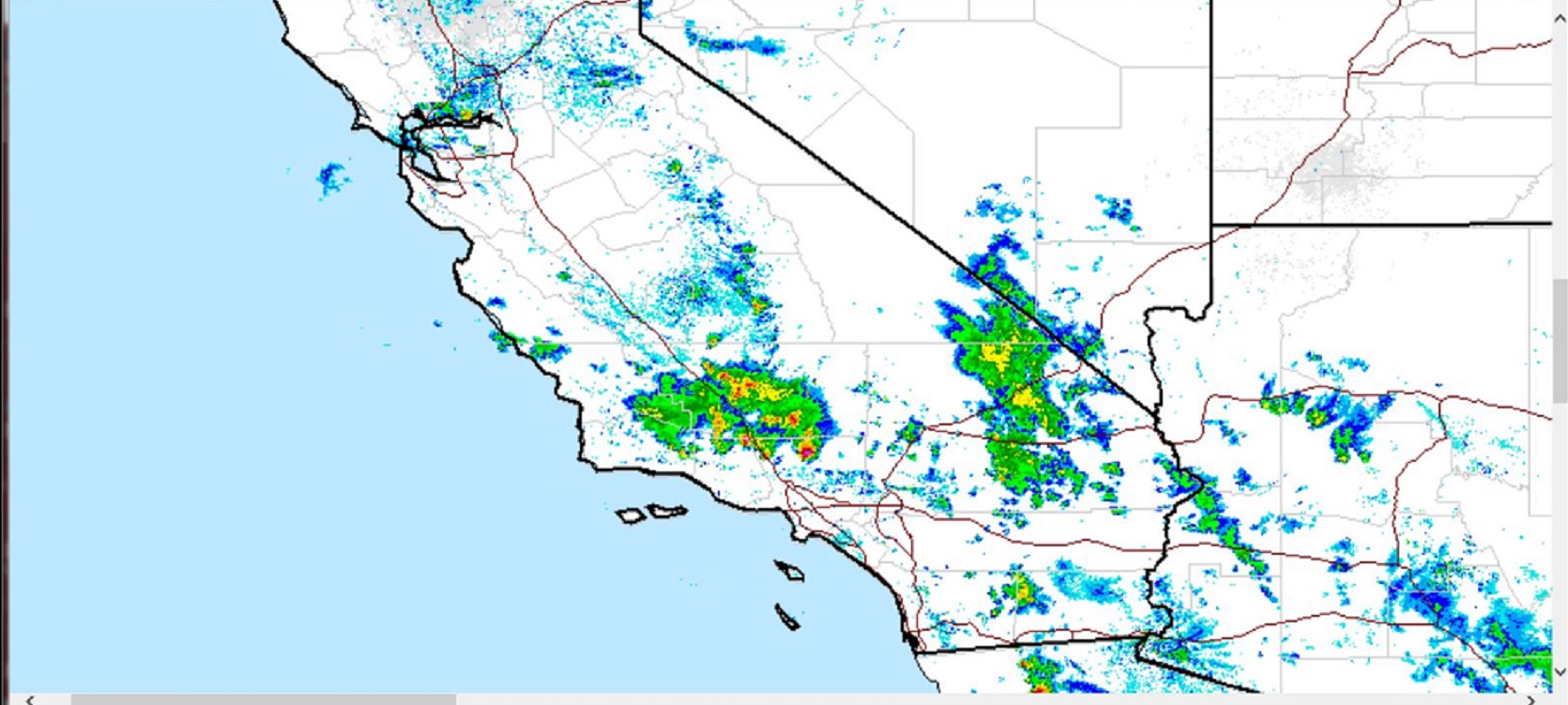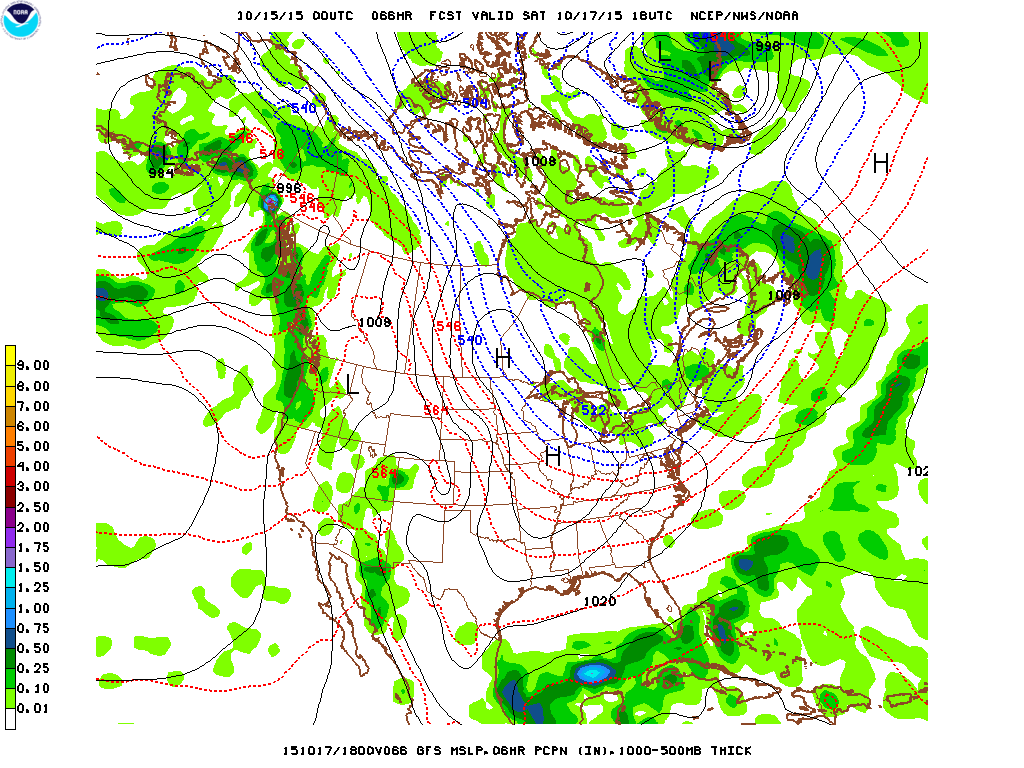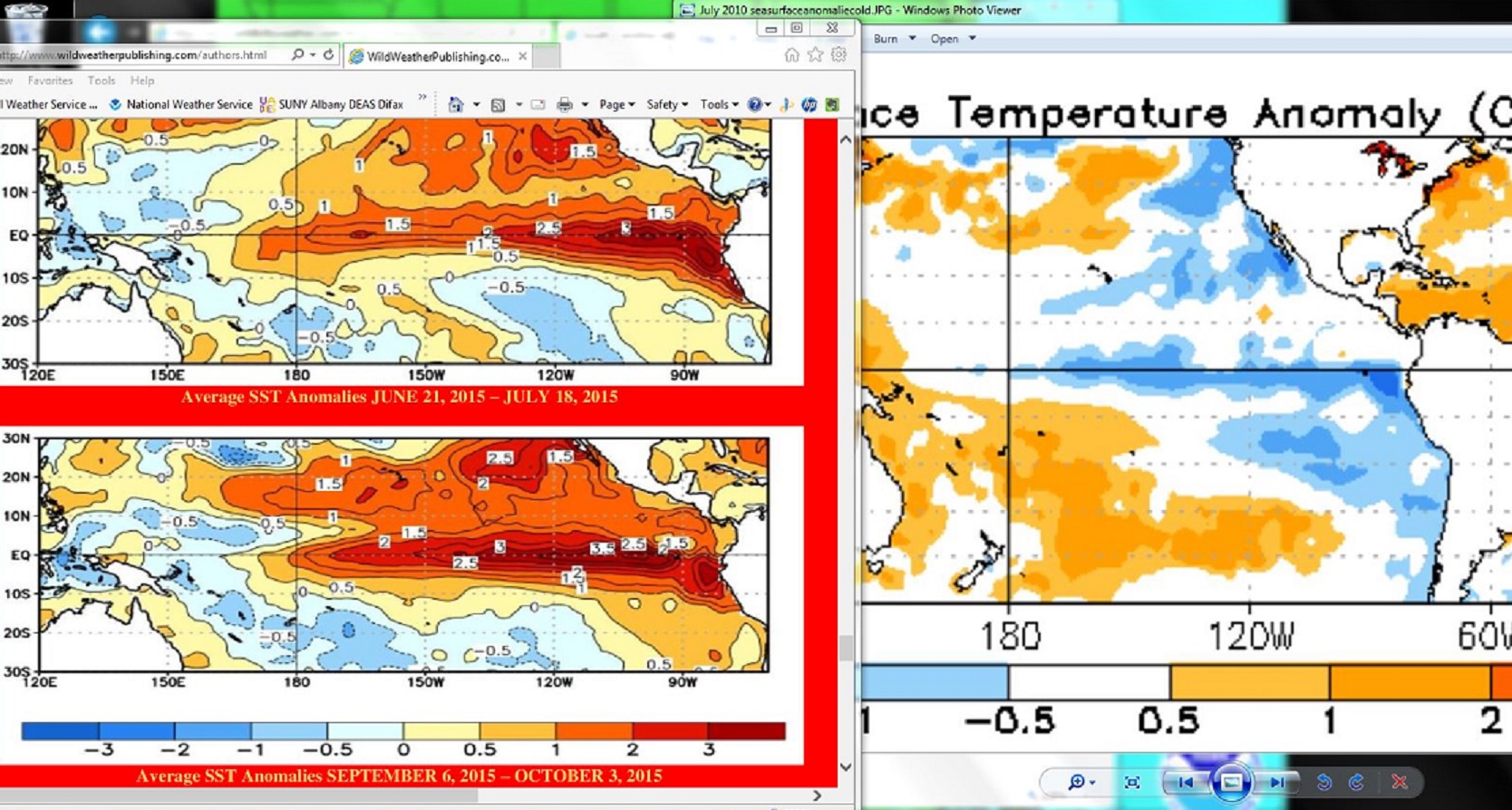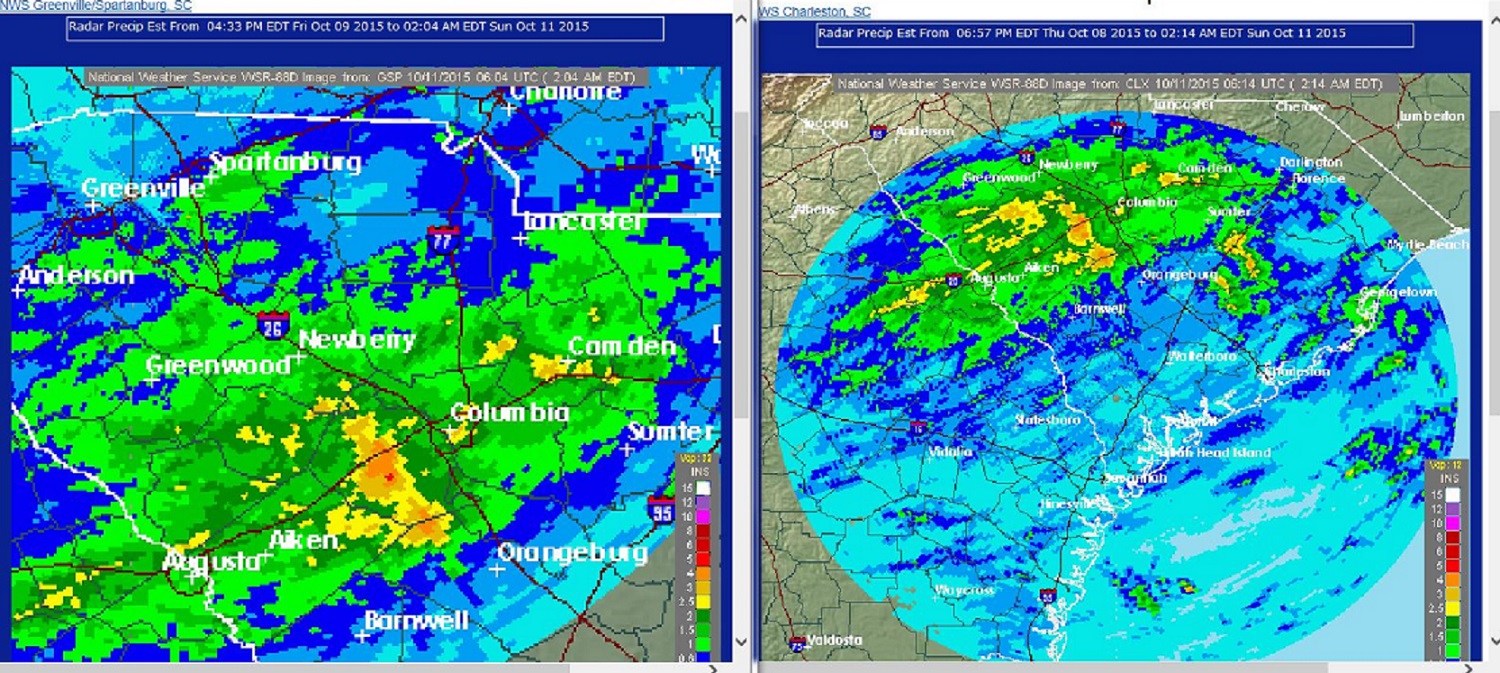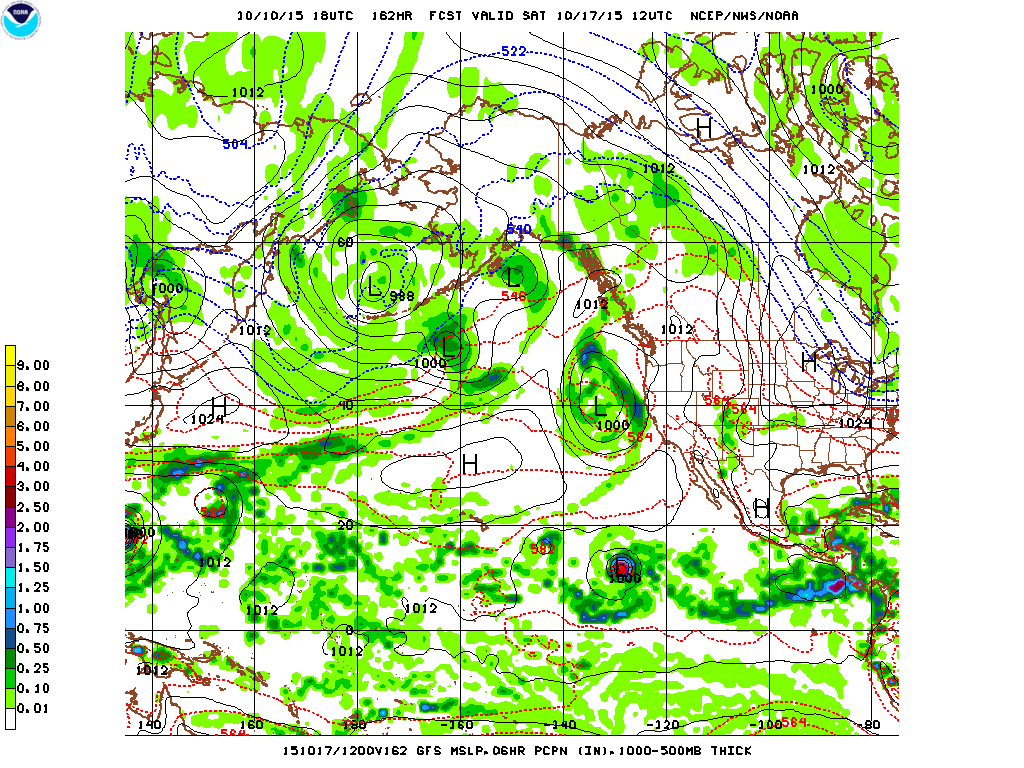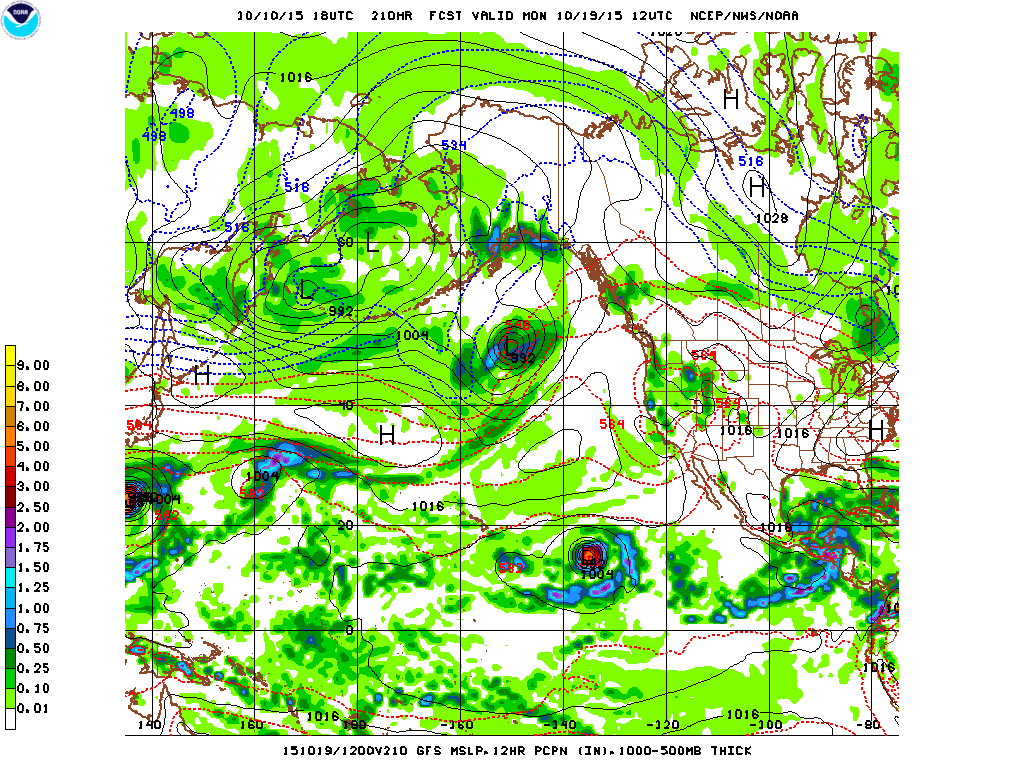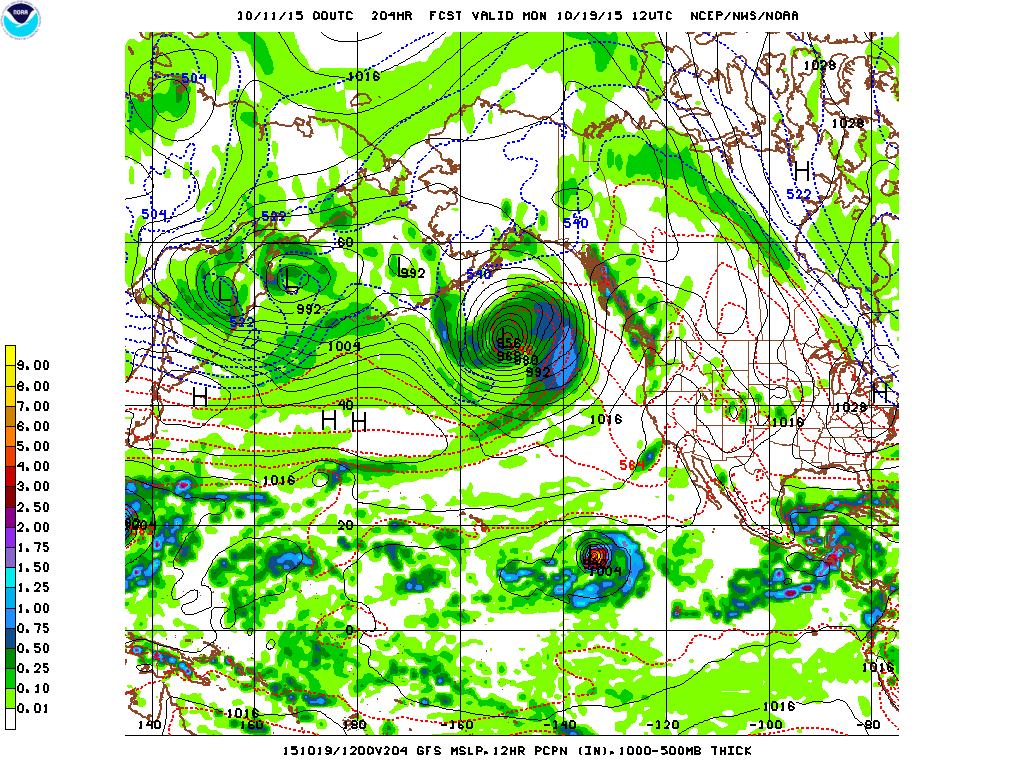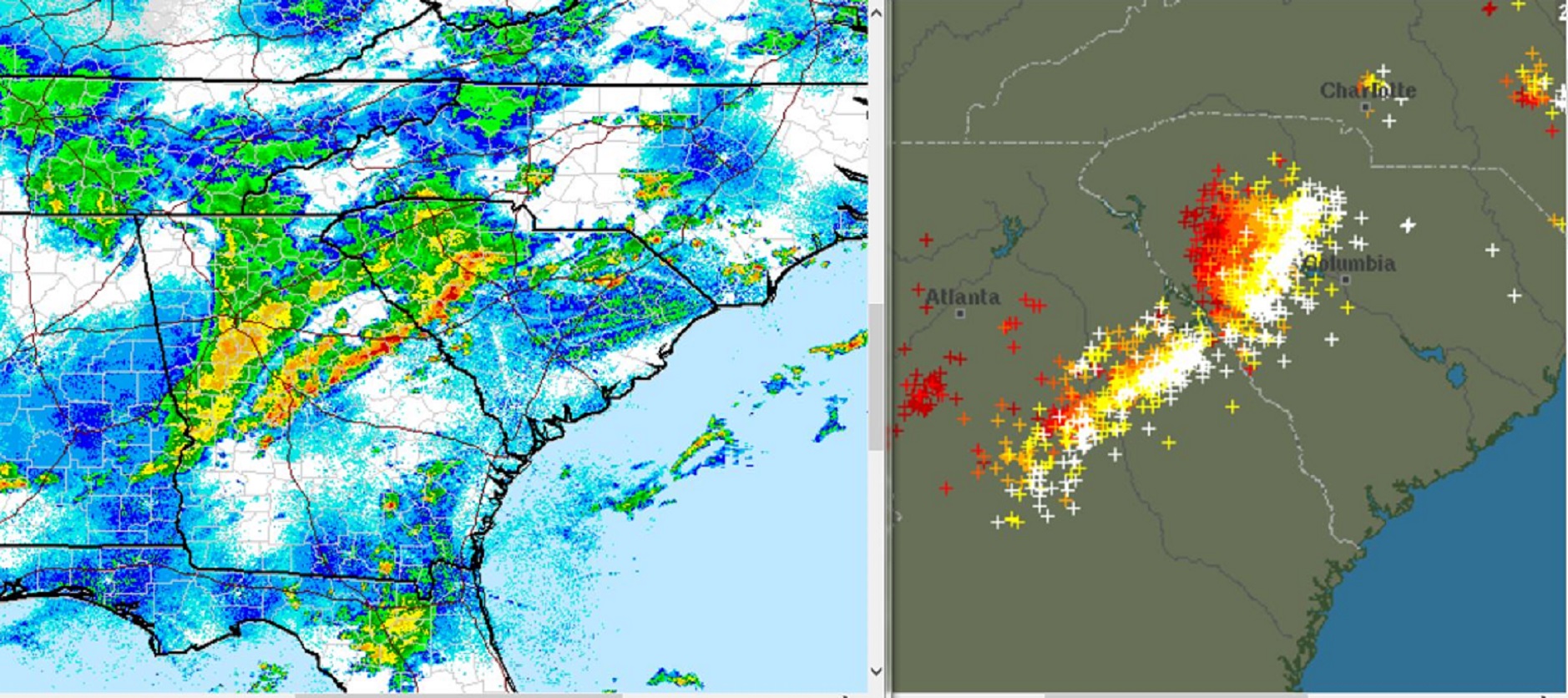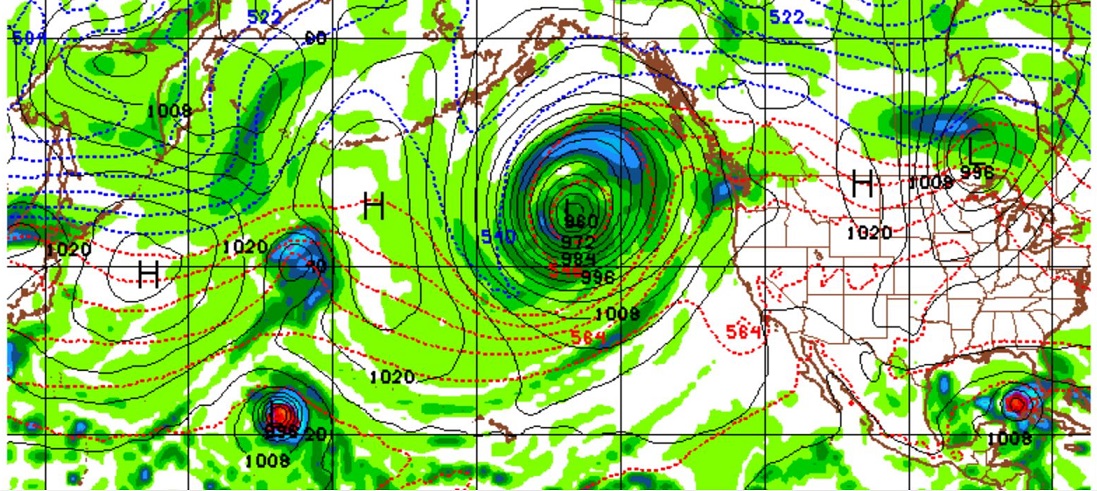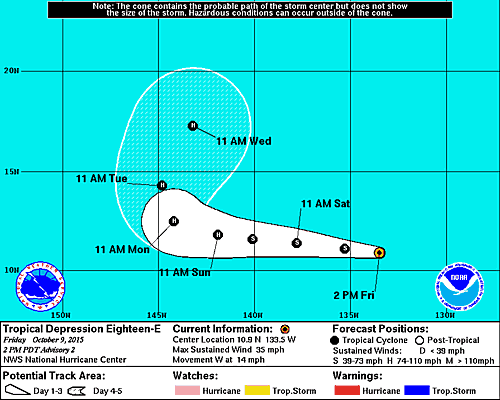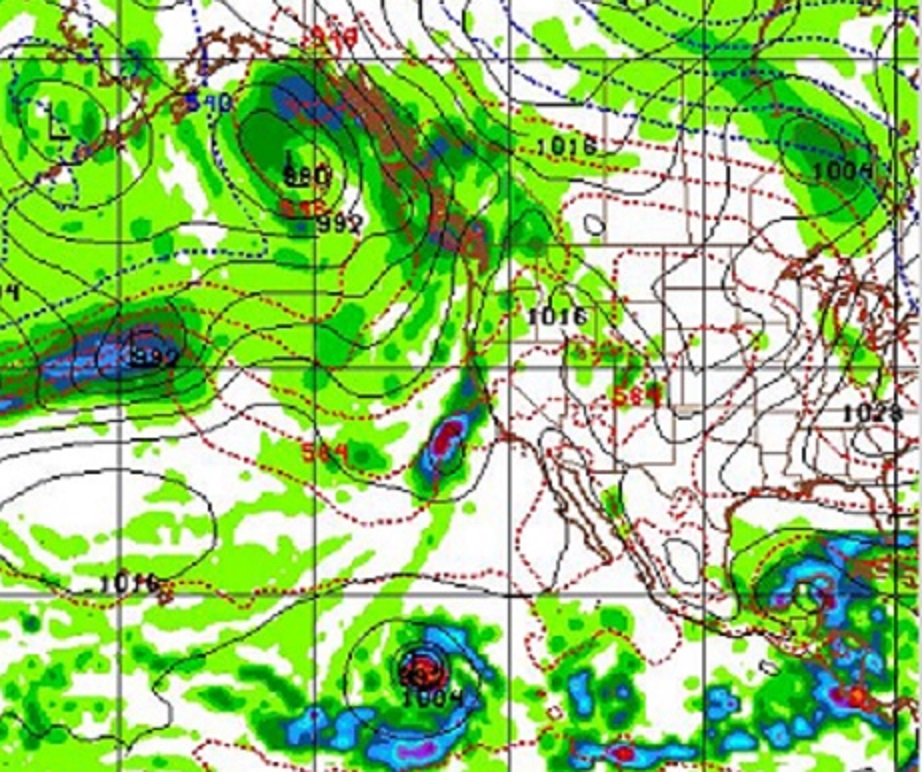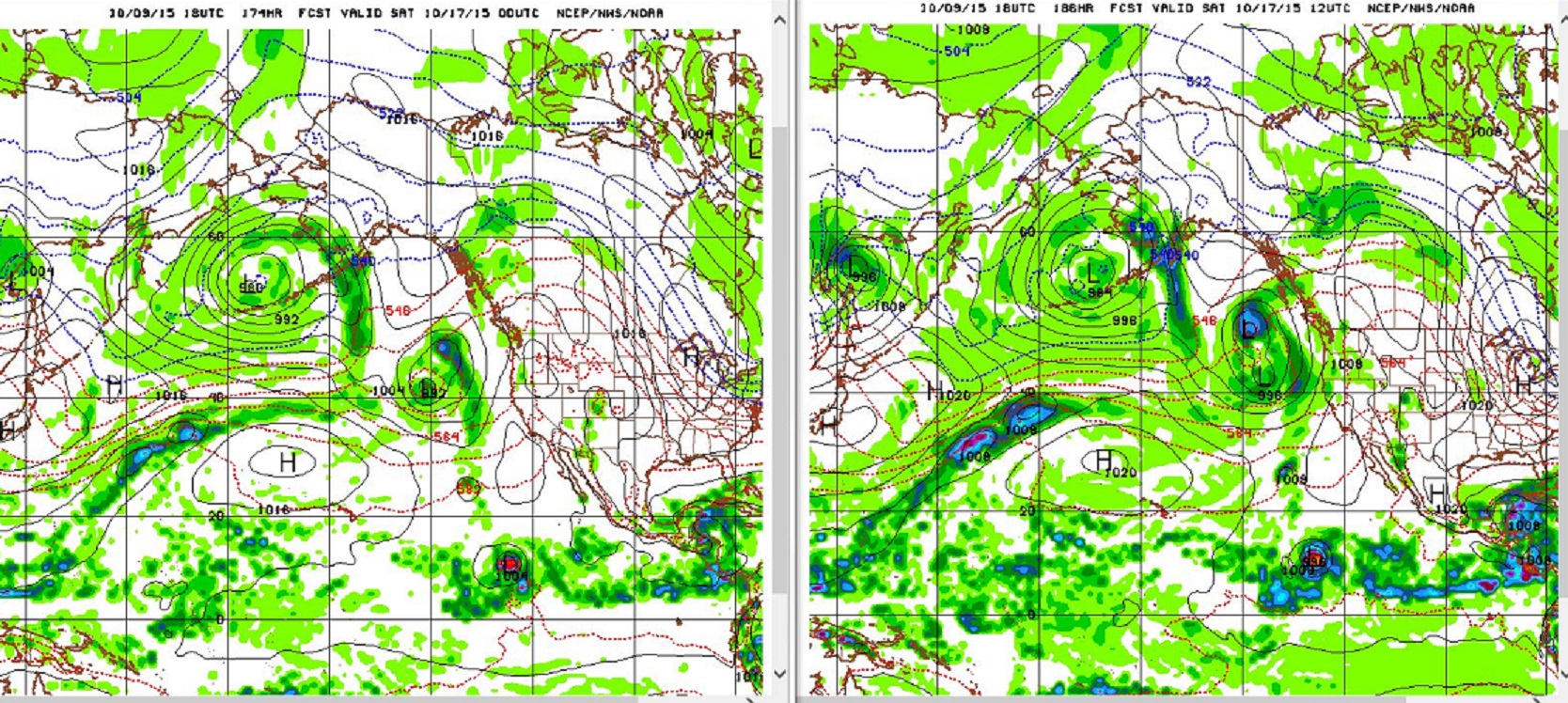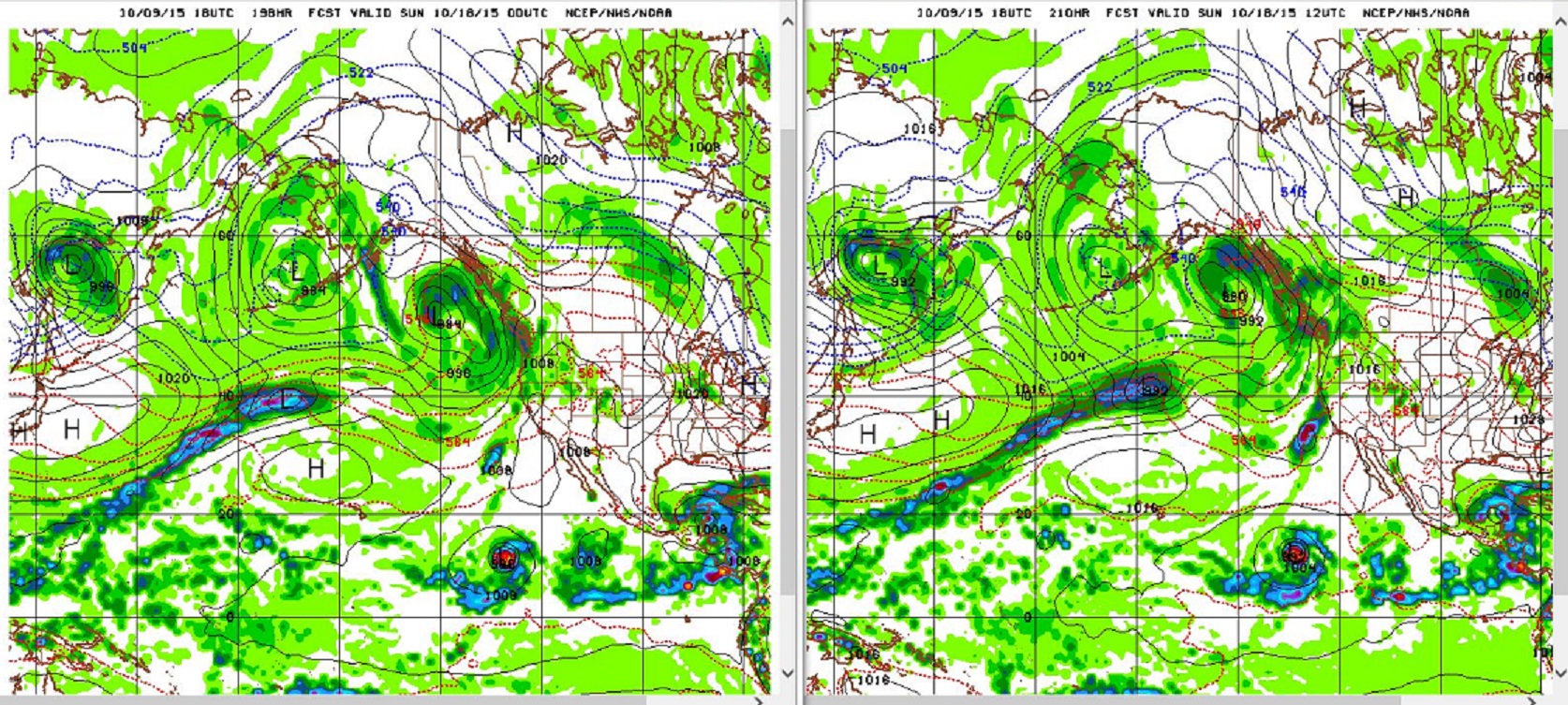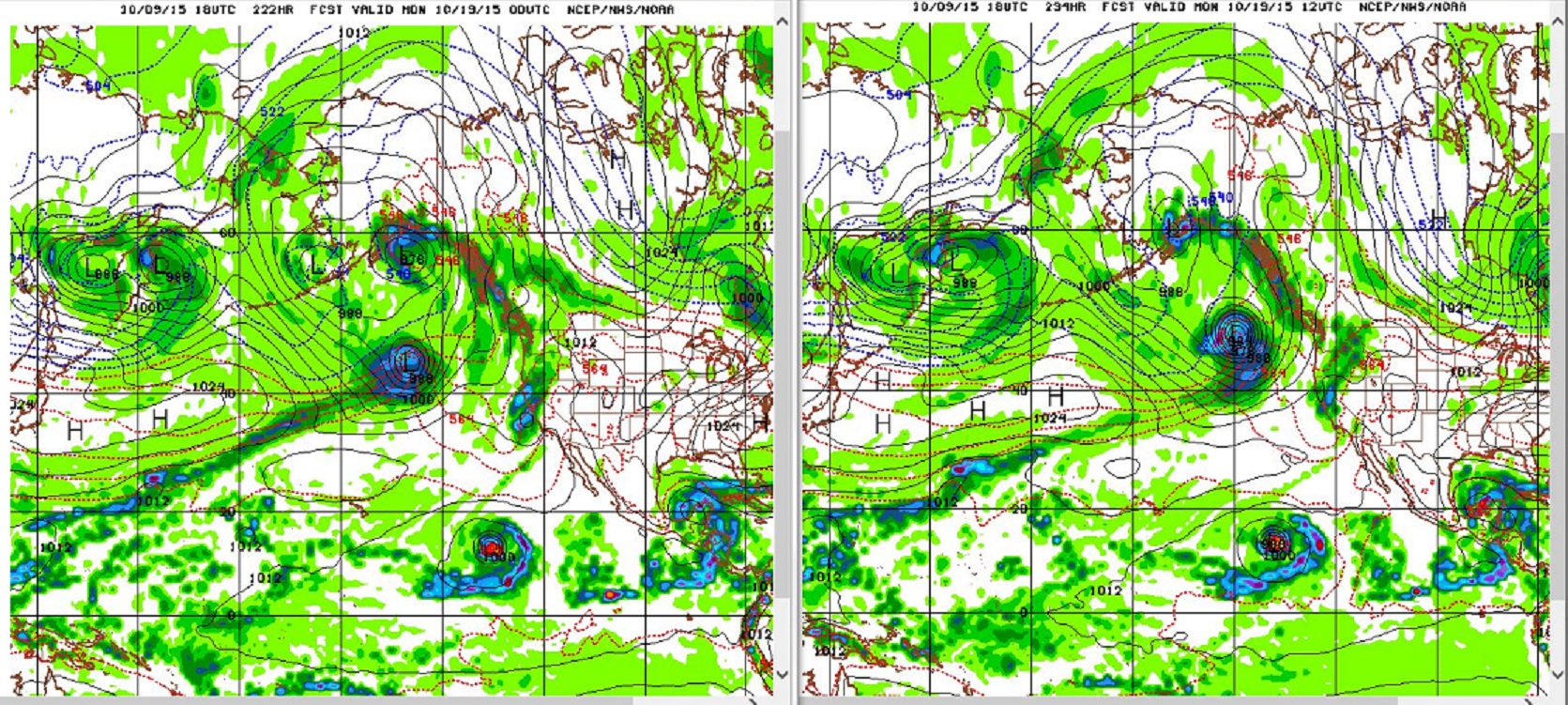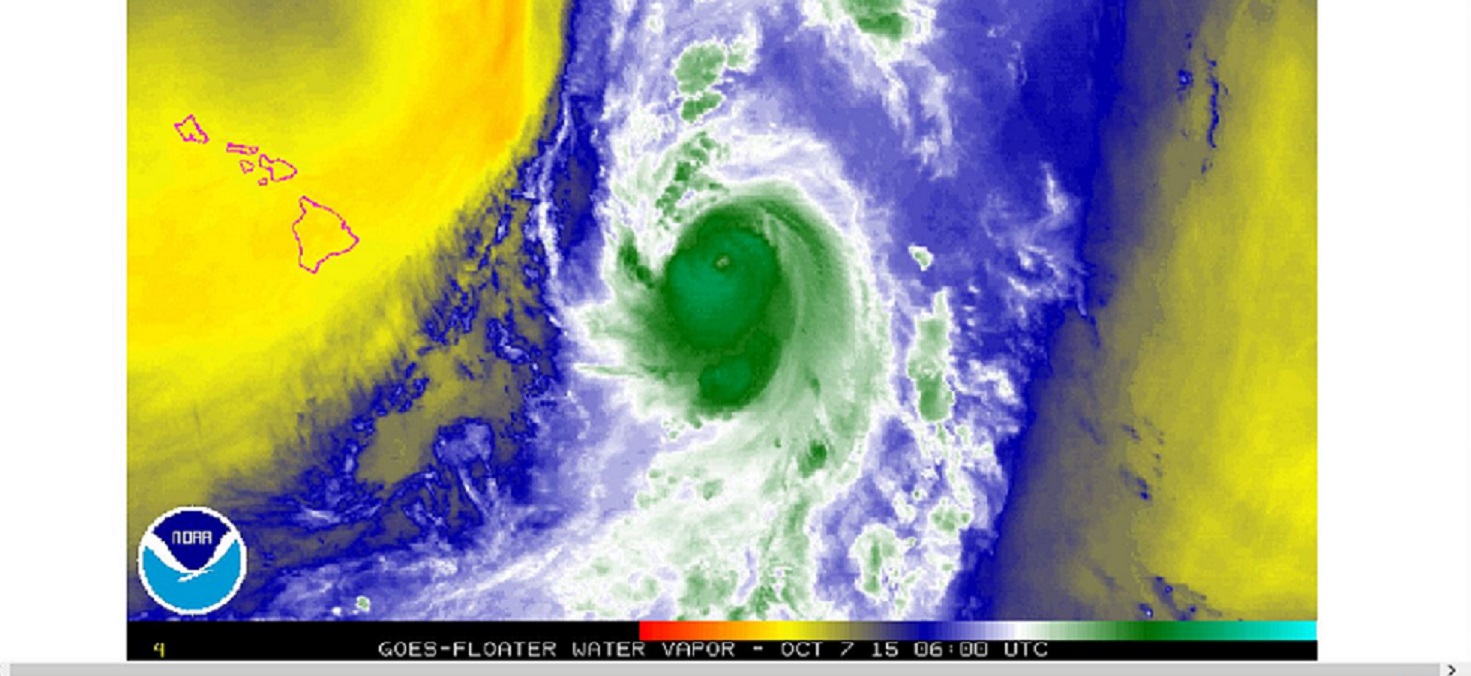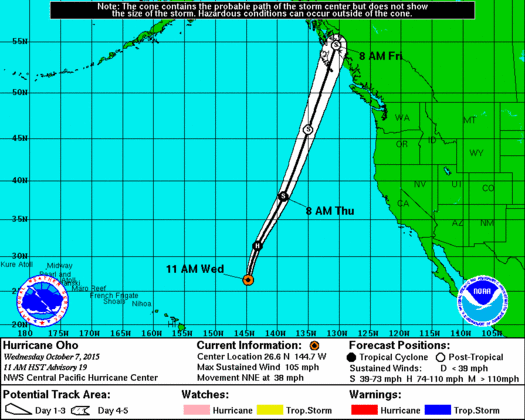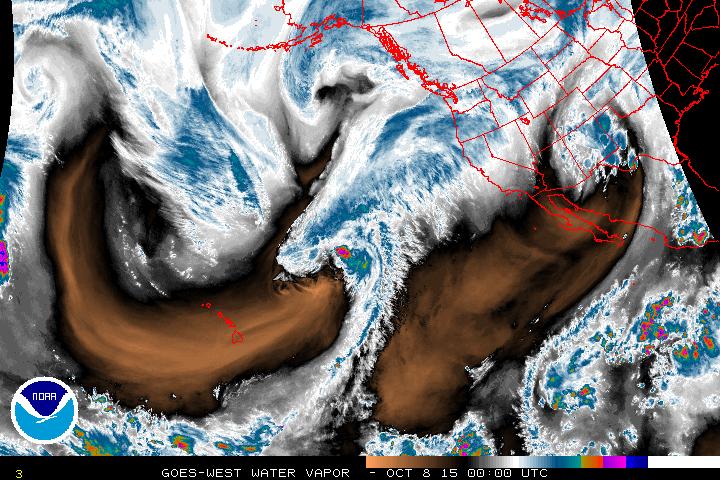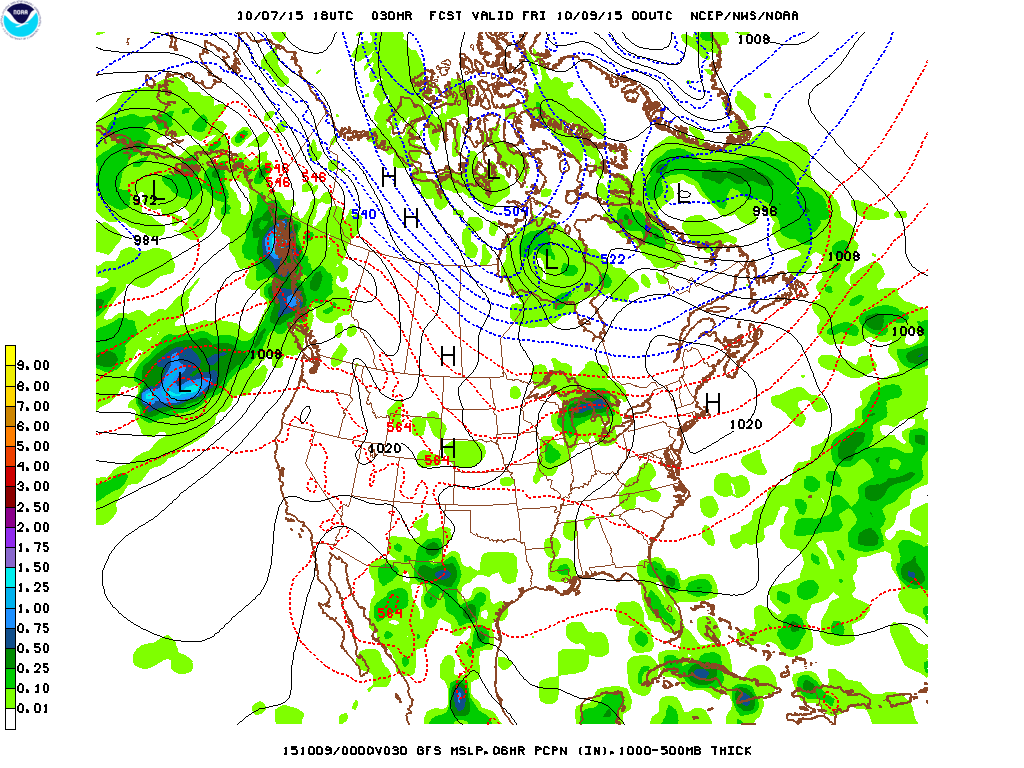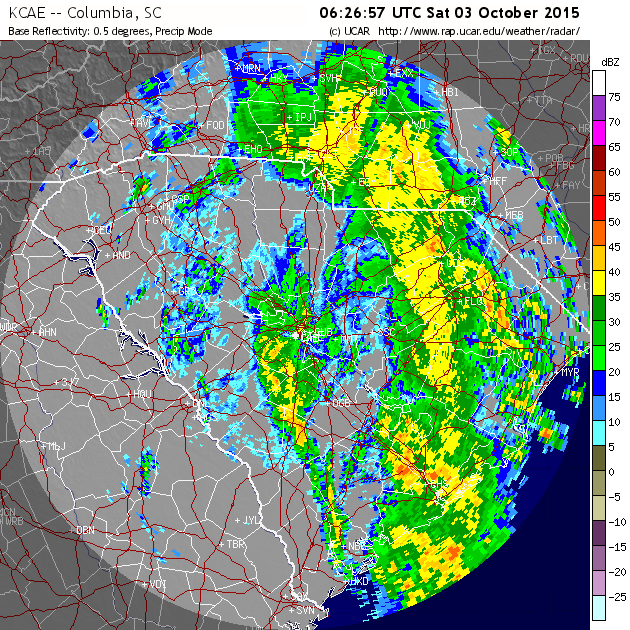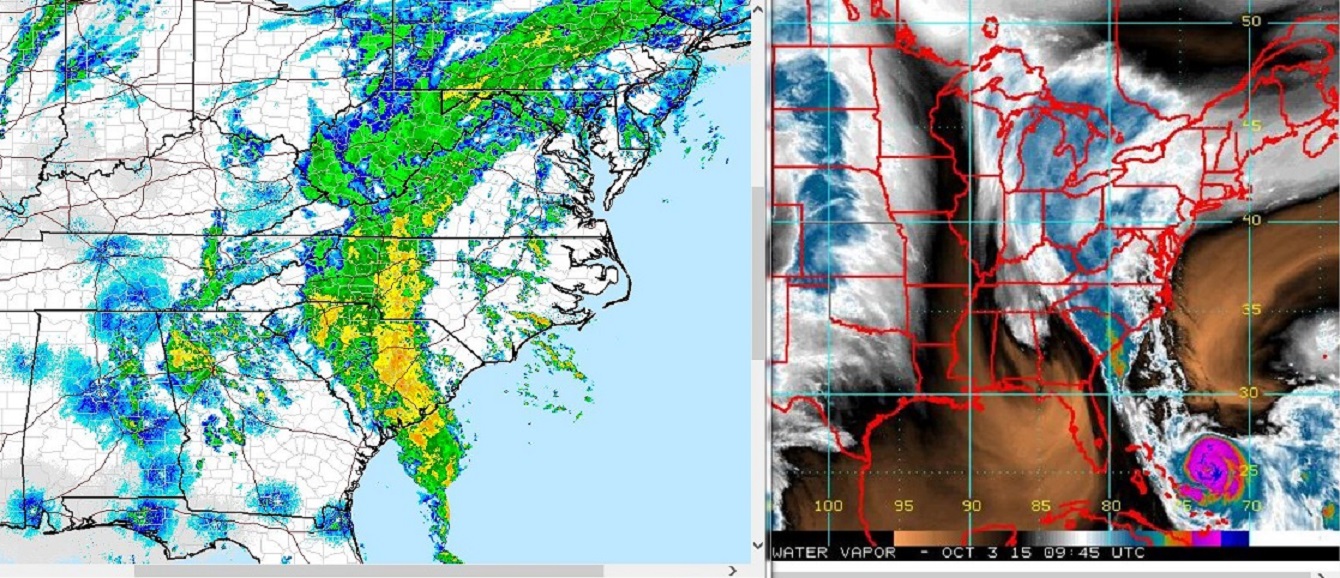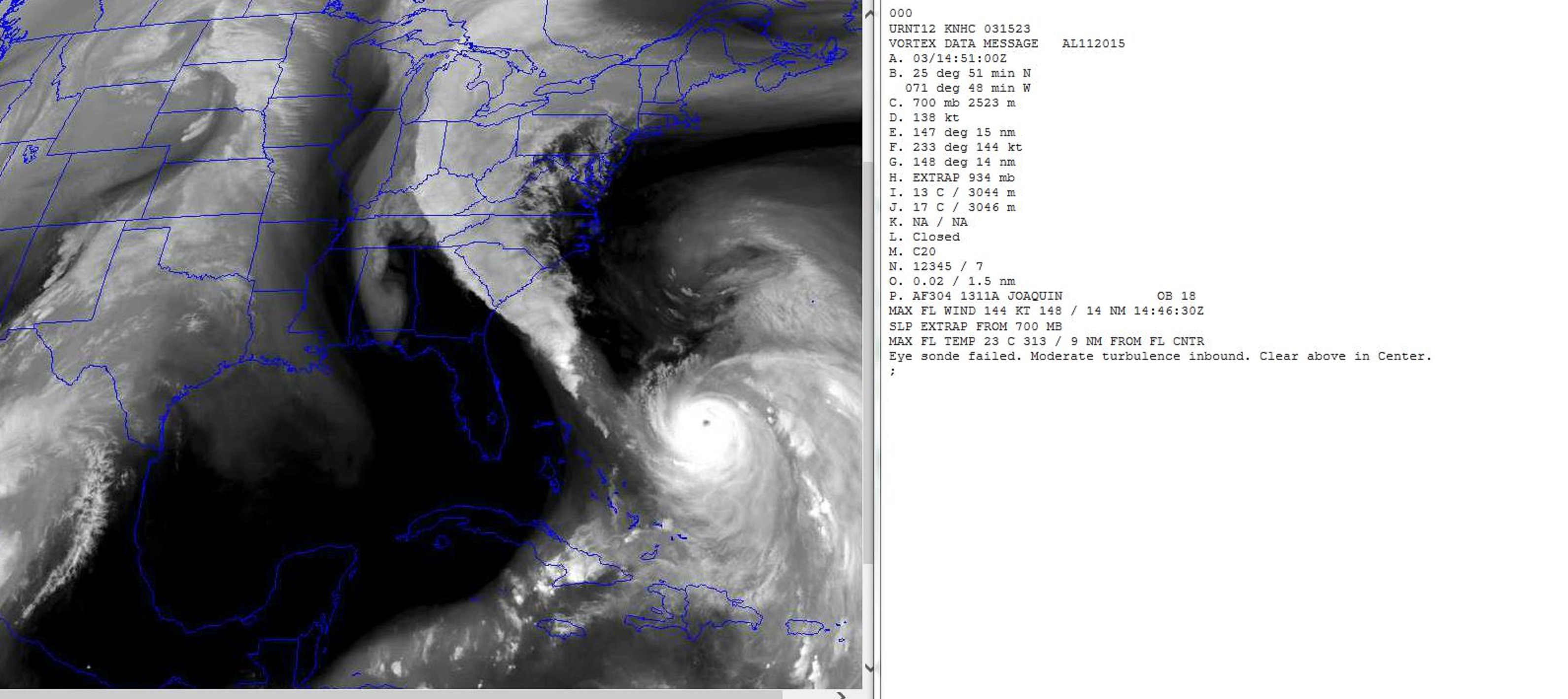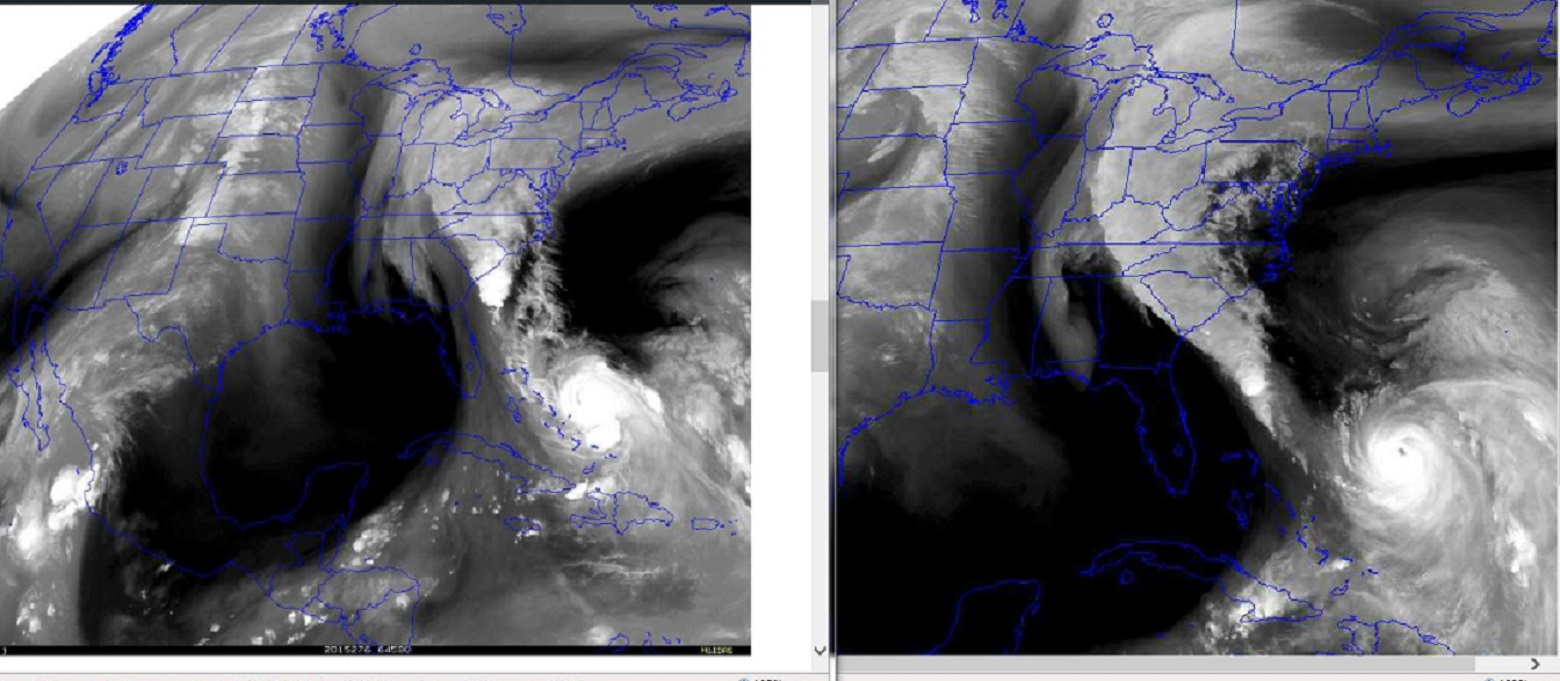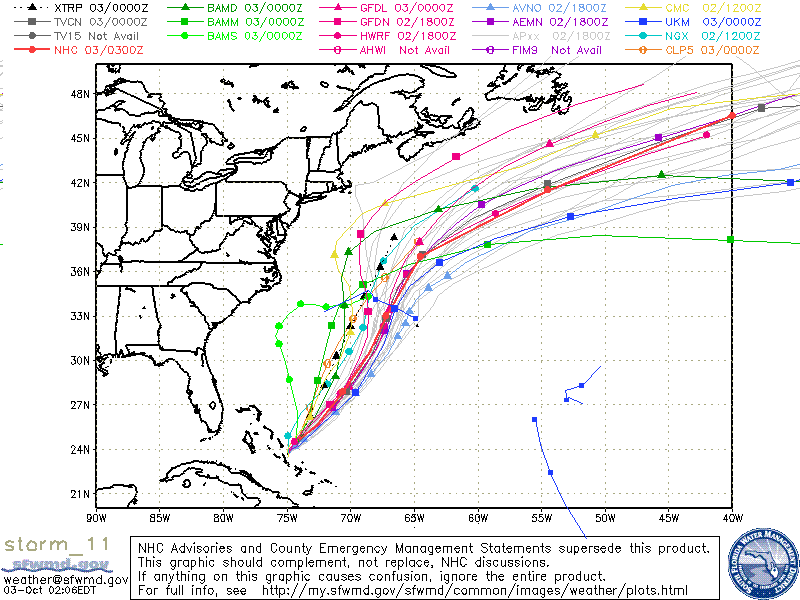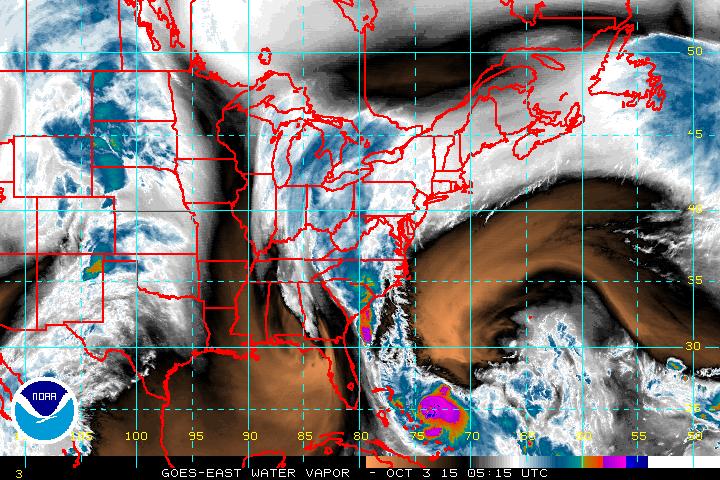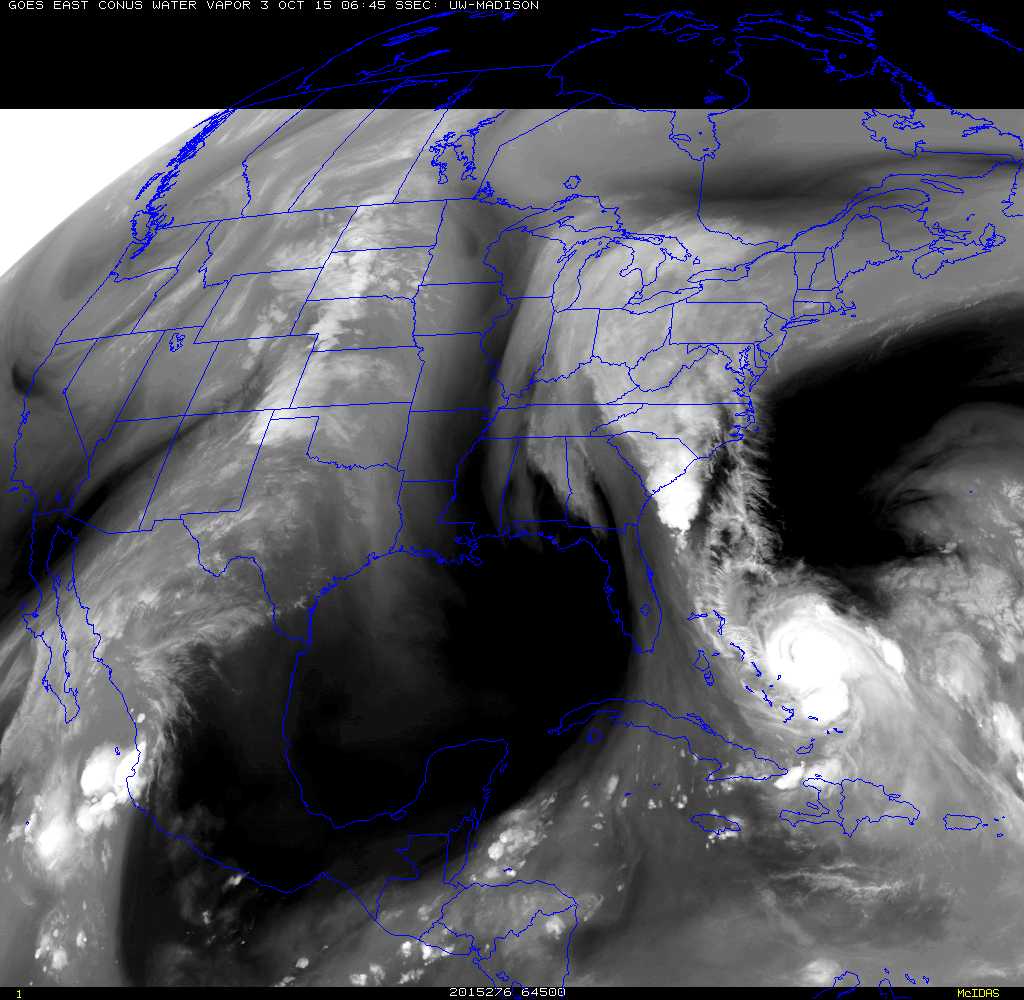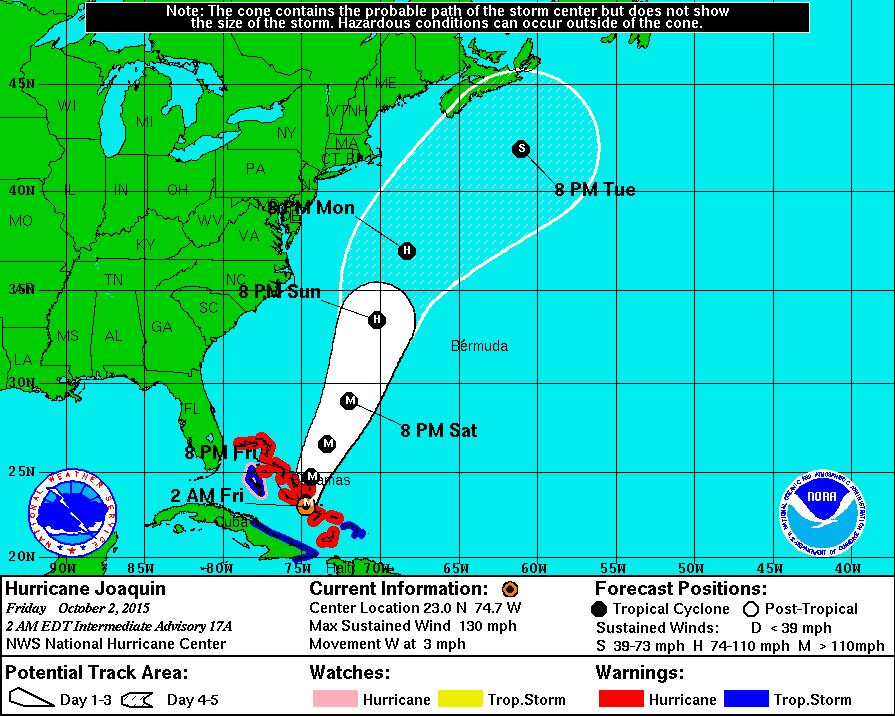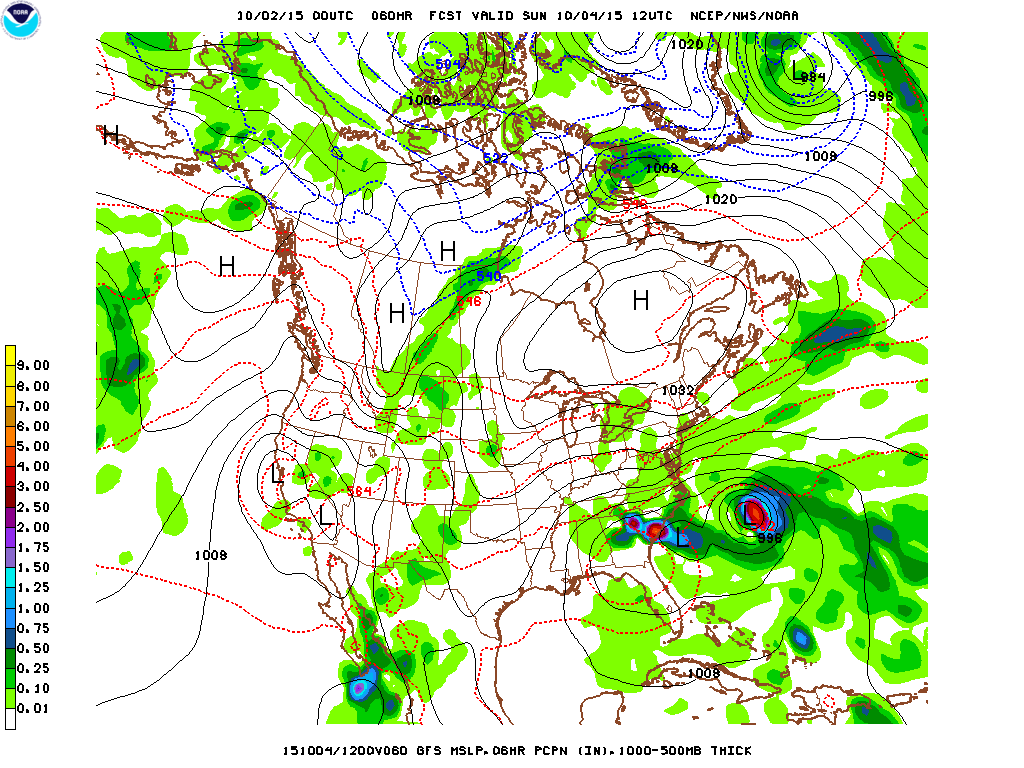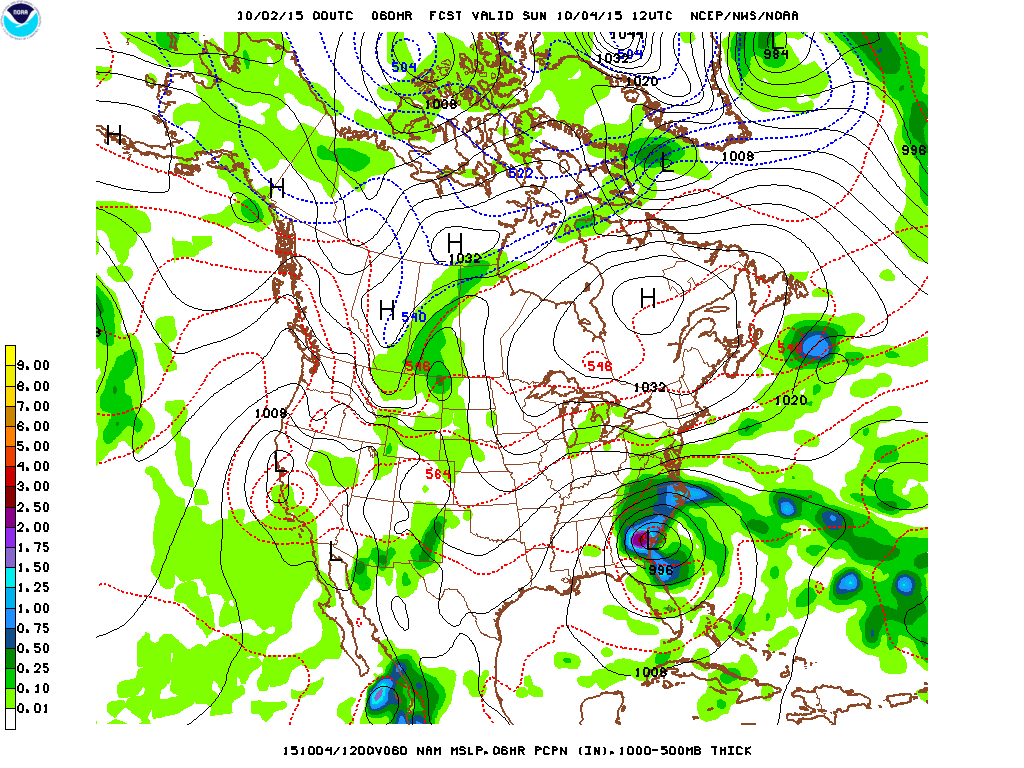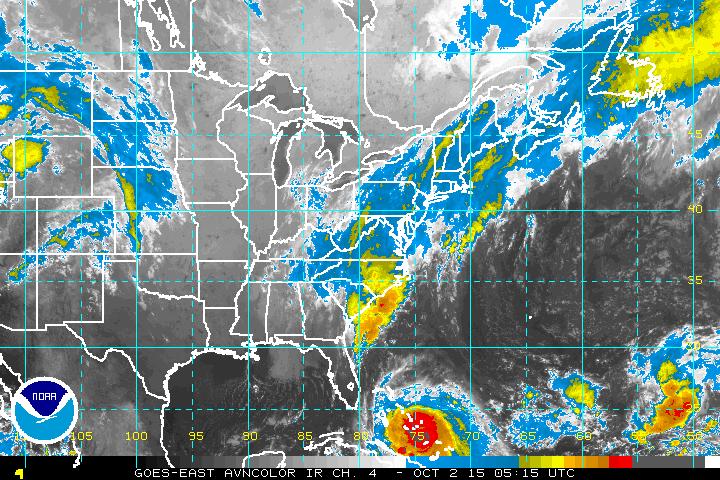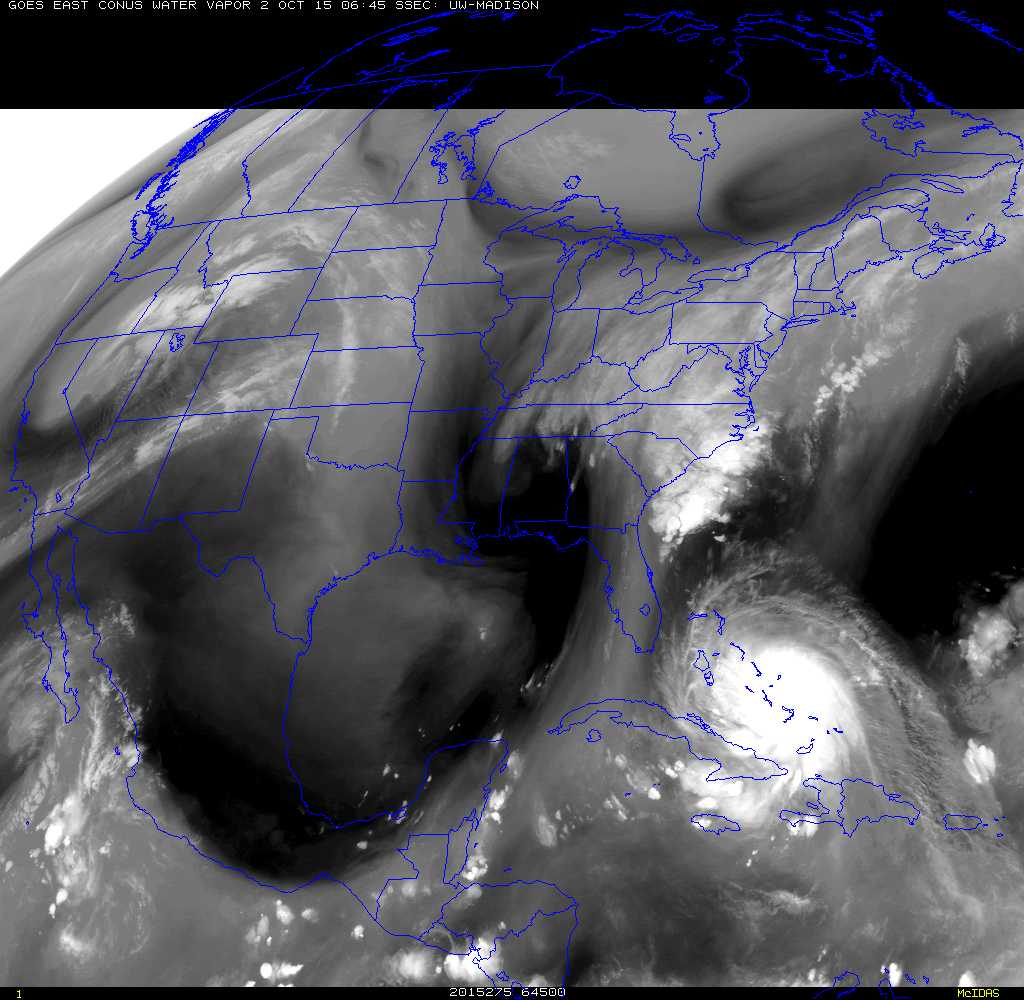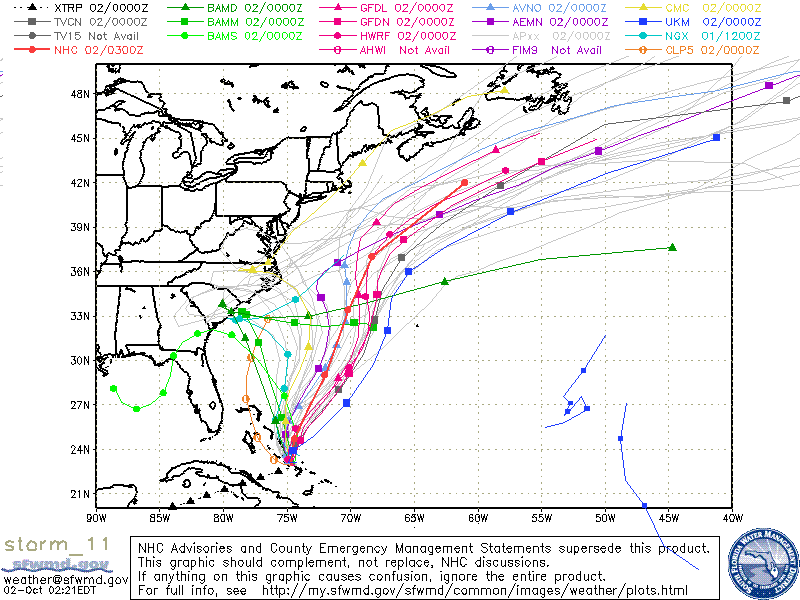October 16, 2015
First a brief review of The Monthly Diagnostic Discussion from The Climate Prediction Center. This discussion was released on October 8 and is posted on the CPC website.
“During September, sea surface temperature anomalies were well above average across the central and eastern Pacific Ocean. The Niño indices generally increased. The atmosphere was well coupled with the ocean, the traditional and equatorial Southern Oscillation Index values became more negative, consistent with enhanced convection over the central and eastern equatorial Pacific and suppressed convection over Indonesia. Collectively, these atmospheric and oceanic anomalies reflect a strong El Niño. All models surveyed predict El Niño to continue into the Northern Hemisphere spring 2016.”
Once again, strong words from a government institution that usually stresses caution and discourages over reaction.
So this is serious stuff, even our conservative government specialists cannot deny the alarming warmth of the central and eastern Pacific or the potential for countrywide impacts this winter.
Despite a relatively quiet current weather pattern across most of the nation on Thursday, slow moving thunderstorms put on an impressive display of large hail and flash flooding in Northern Los Angeles County.
Radar summary, mid-afternoon Oct. 15, 2015
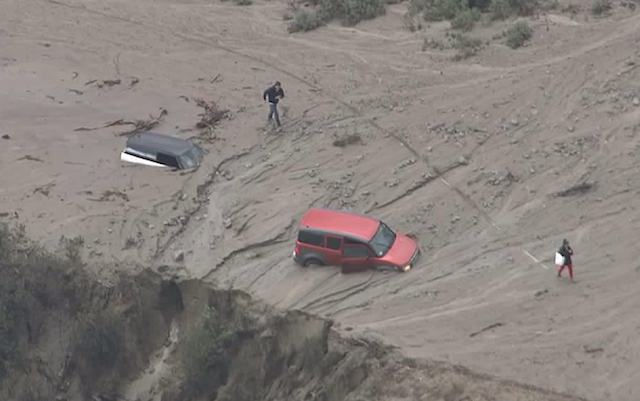 Oct. 15, 2015 Los Angeles County flash flood. (Photo via KTLA)
Oct. 15, 2015 Los Angeles County flash flood. (Photo via KTLA)
from Chapter V in El Niño: The WILD side of the weather cycle…
“California responds to any tropical inundation pretty quickly and dramatically. So, watch California! When their streets become rivers and their desert bridges begin to wash out, it may be time to start filling the sandbags. Bad weather that begins in California will not end there, it will spread to other parts of the country.”
Learn more in my latest e-book El Niño: The WILD side of the weather cycle…
What we know, what we don’t, and WHY you should care!
Wild Bill
